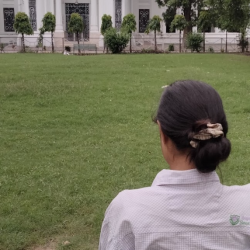

Exiting an aircraft from the left side is a longstanding practice in commercial aviation. But that changed on Tuesday, perhaps for the first time, when passengers disembarked at the front of an IndiGo flight in Delhi.
IndiGo worked on an initial formula with three doors - two on the left and one front door on the right - to save at least five minutes of processing time per flight. For the airline, which operates 1,600 flights a day, this has a cascading effect and represents significant time savings across the network.
“The typical turnaround time… for IndiGo is between 30 and 35 minutes. Using the third ramp is a simple yet effective process that has improved turnaround time by an average of five minutes,” said Sanjeev Ramdas, executive vice president who leads airport operations at IndiGo.
Indigo's operations manual, which cites punctuality as one of its key selling points, states that after an aircraft is parked at a remote stand, all passenger ramps are positioned at the front exit and then at the rear exit, after which the doors are opened. When there are no more passengers on the plane, the security check and refueling are carried out, after which the plane is cleaned for the next flight. Faster turnarounds are critical for low-cost airlines because the business model is to use aircraft for as many hours a day as possible.
“Think of it like a river of water. The more drains you have, the faster the water drains,” he said.
IndiGo under Ramdas has used ramps instead of stepladders from day one to speed up boarding and disembarking. The airline is currently testing the new procedure in Delhi, Mumbai and Bengaluru and will only use it for aircraft that land in remote parking bays – i.e. outside the terminal building. Ramdas said he intends to introduce the three-door deboarding process for at least 70 percent of IndiGo flights.
However, industry experts with experience in ground operations said boarding will be a more complicated process as the right side of the aircraft will be used to load cargo and catering supplies and will therefore impede passenger movement.
Aviation safety expert Captain Amit Singh and founder of NGO Safety Matters said the airline needed to ensure there were enough staff to monitor passengers not running from a busy parking ramp. “Also for safety reasons, passenger traffic is kept to one side of the aircraft. The airline needs to ensure there is enough surveillance to control passenger movements on both sides," he said.




